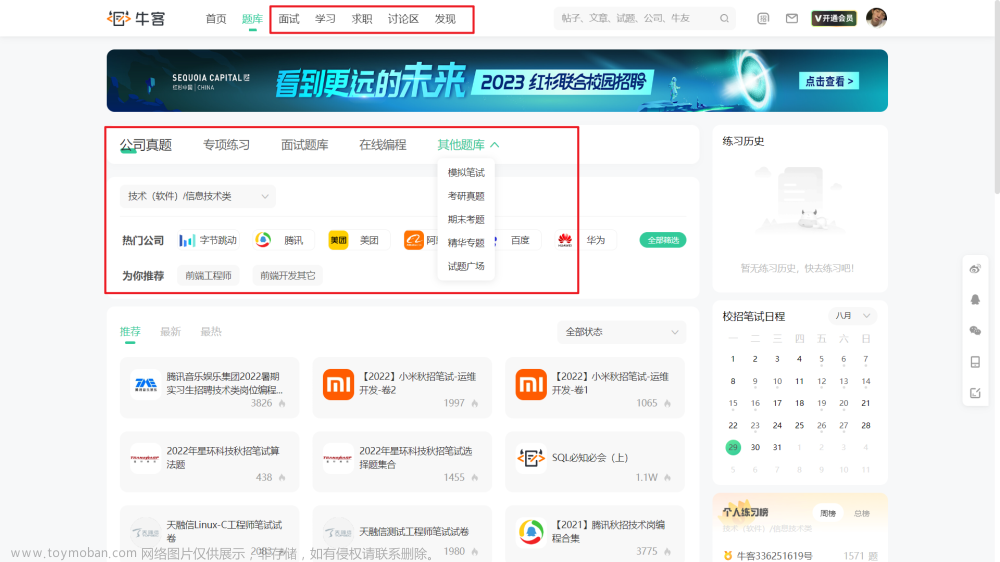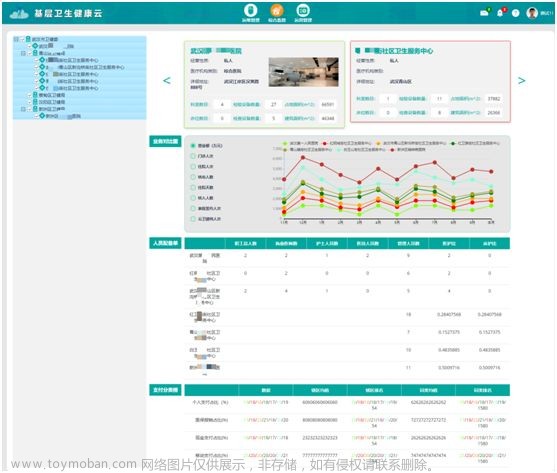array.fill
Array.prototype.fill2 = function (value, start, end) {
const length = this.length; // 获取数组的长度
start = start >> 0; // 将start转换为整数
// 如果end参数未填写,则默认为数组的长度,否则将end转换为整数
end = typeof end === 'undefined' ? length : end >> 0;
// 将start限制在合法范围内,最小值为0,最大值为数组的长度
start = start >= 0 ? Math.min(start, length) : Math.max(start + length, 0);
// 将end限制在合法范围内,最小值为0,最大值为数组的长度
end = end >= 0 ? Math.min(end, length) : Math.max(end + length, 0);
// 使用指定的value填充从start到end范围内的数组索引
while (start < end) {
this[start] = value;
start++;
}
// 返回被修改后的数组
return this;
}这段代码实现了一个自定义的fill2方法,用于在数组中指定的范围内填充指定的值。它接受三个参数:value表示要填充的值,start表示填充的起始索引,end表示填充的结束索引(不包含在内)。
在代码中,首先获取了数组的长度。然后对start和end参数进行处理,将它们转换为整数,并进行范围限制,确保它们在合法的范围内。接下来,使用一个循环从start索引开始,逐个将数组的元素设置为指定的value值,直到达到end索引为止。最后,返回被修改后的数组。
通过使用这个自定义的fill2方法,我们可以在数组中指定的范围内快速填充指定的值。 文章来源:https://www.toymoban.com/news/detail-709056.html
array.map
Array.prototype.myMap = function (callbackFn, thisArg) {
if (this == "undefined" || this == "null") {
throw new TypeError("can not read property 'map' of undefined or null");
}
if (typeof callbackFn !== "function") {
throw `${callbackFn} is not a function`;
}
let O = Object(this); // 将当前数组对象转换为对象类型
let T = thisArg; // 设置回调函数的this值
let len = O.length >>> 0; // 获取数组的长度
let A = new Array(len); // 创建一个新的数组,用于存储映射后的值
for (let k = 0; k < len; k++) {
for (k in O) {
let KValue = O[k]; // 获取当前索引的值
let mapValue = callbackFn.call(T, KValue, k, O); // 调用回调函数进行映射操作
A[k] = mapValue; // 将映射后的值存储到新数组中
}
}
return A; // 返回映射后的新数组
}
let arr = [1, 2, 3, 4];
let arr2 = arr.myMap(function (currentValue, index, Array) {
console.log(currentValue, index, Array);
return currentValue + 1;
});
console.log(arr2); Array.prototype.myMap = function (callbackFn, thisArg) {
if (this == "undefined" || this == "null") {
throw new TypeError("can not read property 'map' of undefined or null")
}
if (typeof callbackFn !== "function") {
throw `${callbackFn} is not a function`
}
let length = Object(this).length >>> 0
let newArrray = []
let i = 0
while (i < length) {
if (i in this) {
//2. call修改了函数callbackFn的this指向,指向thisArg,后面的this还是指向的 arr,作为参数传给函数
newArrray.push(callbackFn.call(thisArg, this[i],i,this))
}
i++
}
return newArrray
}
let arr = [1,2,3,4]
// 1.绑定实例:用类实例对象去调用成员方法,此时this的指向为调用的实例对象 arr
let arr2 = arr.myMap(function(currentValue,index,Array){
// 3.此时的参数 currentValue,index,Array 对应2.传入的参数:this[i],i,this
// 此时this为callbackFn的指向 this.Args 也就是 {message:"🐟"}
console.log(currentValue,index,Array,this);
return ++currentValue
},{message:"🐟"})
console.log(arr2);节流函数
function myThrottle(myFn,myDelay){
let initState = true
return function(...args){
if(!initState) return
initState = false
setTimeout(() => {
myFn.apply(this,args)
initState = true
}, myDelay);
}
}
function mytest(arguments){
console.log('test'+ arguments); //testppp
}
const oneTest = myThrottle(mytest,500)
oneTest('ppp')防抖函数
function debounce(fn,delay){
var initWaitTime = null
return function(...args){
clearTimeout(initWaitTime)
initWaitTime = setTimeout(() => {
fn.apply(this,args)
},delay)
}
}
function testDebounce(){
console.log('防抖');
}
const test4 = debounce(testDebounce,1000)
console.log(test4);
test4()
test4()
test4()异步并发调度器Scheduler
class Scheduler {
constructor(max) {
this.max = max
this.count = 0
this.queue = []
}
add(p) {
this.queue.push(p)
this.start()
}
start() {
if (this.count >= this.max || !this.queue.length) return
this.count++
this.queue.shift()().finally(() => {
this.count--
this.start()
})
}
}
// 延迟函数
const sleep = time => new Promise(resolve => setTimeout(resolve, time));
// 同时进行的任务最多2个
const scheduler = new Scheduler(2);
// 添加异步任务
// time: 任务执行的时间
// val: 参数
const addTask = (time, val) => {
scheduler.add(() => {
return sleep(time).then(() => console.log(val));
});
};
addTask(1000, '1');
addTask(500, '2');
addTask(300, '3');
addTask(400, '4');
// 2
// 3
// 1
// 4class Scheduler {
constructor(maxNum) {
this.maxNum = maxNum; // 最大同时执行任务的数量
this.count = 0; // 当前正在执行的任务数量
this.taskList = []; // 任务列表,用于存储待执行的任务
}
addTask(time, val) {
this.taskList.push([time, val]); // 将任务添加到任务列表中
}
start() {
if (!this.taskList.length) return; // 如果任务列表为空,则直接返回
if (this.count < this.maxNum) { // 如果当前正在执行的任务数量小于最大值
const [time, val] = this.taskList.shift(); // 从任务列表中取出一个任务
this.count++; // 增加正在执行的任务数量
setTimeout(() => { // 使用setTimeout延迟执行任务
console.log(val); // 打印任务的值
this.count--; // 减少正在执行的任务数量
this.start(); // 继续执行下一个任务
}, time * 1000); // 将时间转换为毫秒,并设置延迟执行的时间
this.start(); // 继续执行下一个任务
}
}
}深拷贝函数:文章来源地址https://www.toymoban.com/news/detail-709056.html
function deepClone(target, hashMap = new WeakMap()) {
// 基本数据类型,直接返回
if (typeof target !== "object" || target == null) {
/*
函数,则调用函数并返回结果(虽然这里是同一个存储空间
但是如果修改函数时,相当于重写函数,会自动分配堆内存存放新函数,也就是不会改变原函数)
*/
if (target instanceof Function) return target.call(this, ...arguments);
return target;
}
// 日期对象,则创建一个新的日期对象并返回
if (target instanceof Date) return new Date(target);
// 正则表达式对象,则创建一个新的正则表达式对象并返回
if (target instanceof RegExp) return new RegExp(target);
// 创建一个与目标对象构造函数相同的新对象
let res = new target.constructor();
// 如果哈希表中已经存在目标对象,则直接返回对应的新对象
if (hashMap.get(target)) return hashMap.get(target);
// 将新对象和目标对象存入哈希表中
hashMap.set(res, target);
// 遍历目标对象的属性
for (let key in target) {
// 递归调用深拷贝函数,复制目标对象的属性值,并赋值给新对象的对应属性
res[key] = deepClone(deepClone(target[key], hashMap));
}
// 返回新对象
return res;
}到了这里,关于手撕js中常见方法的文章就介绍完了。如果您还想了解更多内容,请在右上角搜索TOY模板网以前的文章或继续浏览下面的相关文章,希望大家以后多多支持TOY模板网!





![[从零开发JS应用] 如何在VScode中配置Javascript环境,常见的调试方法有哪些?](https://imgs.yssmx.com/Uploads/2024/02/762332-1.jpg)




